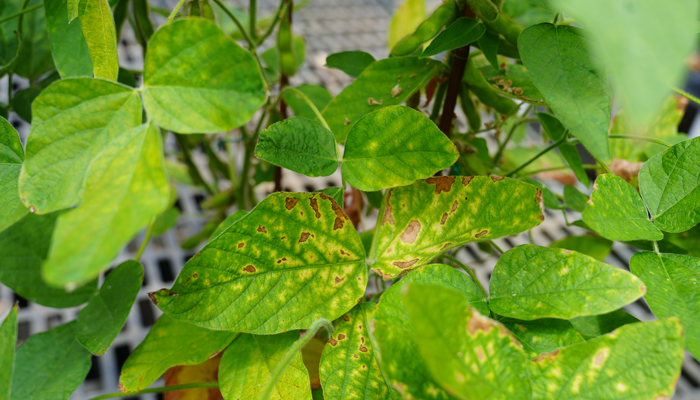What Tools Are Available To Help Detect and Monitor Red Crown Rot Across Illinois Soybean Fields?
Advanced Detection and Monitoring of Red Crown Rot in IL Soybean Fields Using Remote Sensing and Machine Learning
Early detection of red crown rot (RCR) in soybean fields is critical in managing this disease that can cause up to 50 percent yield loss. However, manual and drone scouting can be time-intensive and costly. The research team will use both drone and satellite imagery to develop a disease detection model to help farmers and the industry better predict outbreaks and implement management practices.
Why This Research Is Important
- Detecting RCR can be complicated as its symptoms are often confused with sudden death syndrome (SDS). Reporting and tracking the pathogen tends to be done at the county instead of state level, which also limits the ability to predict its spread.
How This Research Benefits the Farmer
- A predictive model for RCR occurrence that also factors in environmental and cultural variables will provide farmers the ability to deploy more timely and targeted management practices. For example, they will be able to identify hot spots where a seed treatment may be a solution.
Research Team
- Dr. Boris X. Camiletti, Assistant Professor, UIUC
Trial Locations
- Western and Southwestern Illinois
- Goal is to cover as many counties as possible
About the Lead Researchers

Dr. Boris X. Camiletti
Assistant Professor
University of Illinois Urbana-Champaign (UIUC)
217-333-2905
bxc@illinois.edu
Project Updates
Red crown rot is advancing in Illinois, with confirmed infections now in Shelby County soybean commercial fields.
August 4, 2025
Red crown rot symptoms are surfacing in Illinois soybeans—scout now to identify and manage this emerging threat.
July 24, 2025
Help advance early detection of red crown rot—researchers need farmer participants to test a new satellite-based model that’s showing promising results.
June 11, 2025
ARE YOU A FARMER OR ADVISOR?
If you’re a farmer or advisor, we invite you to take our Soybean Production Concerns Survey linked below to help guide future ISA research efforts. We also encourage you to contact us below with specific production challenge research ideas.
ARE YOU A RESEARCHER?
If you’re a researcher interested in working with ISA on a project, we encourage you to contact us with your ideas. The RFP will open in early March. Contact us below to be added to the mailing list for more information.





 and then
and then